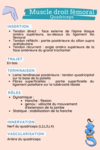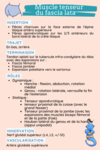Osteopathy and classical dance

Flexibility and elegance are related to classical dance and yet classical dance is an art that requires long hours of training and a great mastery of gestures and movements. This discipline can lead to dysfunctions in the body involving, in the long run, great lesions.
What are the pathologies of the dancer?
- Muscle injuries with strains, tears, contractures, or muscle strain
- Tendinous lesions: we speak of tendinopathy
- Bone injuries: can be contusions, fractures, periostitis or fatigue fractures
- Joint injuries: such as strains or sprains
The dancer's knee
The knee represents a very solicited zone in the classical dancer, in particular on the movements known as "d'en dehors".
The en-dehors is a classical dance figure. It is a basic technique that is part of the first learning in dance and consists in developing the movement in external rotation of the lower limbs. Anatomically, the en dehors represents a standing dancer with an external rotation of the foot of 90° in relation to the sagittal axis. It is realized for 70° by the external rotation of the hip, 5° by the external rotation of the leg skeleton, 15° by the abduction of the foot.
Performing this movement with a certain stiffness of the ankle or hip can lead to serious lesions in the long term such as patellar tendinopathy (involves pain when bending, jumping, ...), patellofemoral syndrome or crow's feet tendinopathy (causes pain in the superior-internal compartment of the knee).
The following lesions may also occur if the patient has ligament hyperlaxity, which leads to deficits in muscle and proprioception.
The spine of the classical dancer
The dancers' lifts and the overstrain on the back can lead to disc herniations . There are also pathologies such as spondylolisthesis due to hyperlordosis, which represents the sliding of a lumbar vertebra, forward, regularly the last or that common lumbar pain, this type of lumbar pain can also cause muscle contractures in the area of the pelvis and lumbar.
Hip protrusion in the classical dancer
When the tendon catches on a bony protuberance, it causes a muscle strain with severe pain. This is called a hip impingement.
This pathology is found during extreme amplitudes, out-of-roundness and also during rounding. The muscles at the origin can be varied: psoas, anterior rectus, TFL, flexors, ...
Periostitis of the classical dancer
This type of pathology can occur after a change in training intensity, a change in dance shoes or can be the result of a biomechanical problem in the lower limb.
The posterior carrefour syndrome
This syndrome results from a compression of the tissues at the level of the posterior part of the ankle, it is often linked to repeated plantar flexions and the practice of dancing with pointe shoes. This pathology can follow fractures around the talus, the tibia and capsulo-ligamentary compressions. It does not affect the Achilles tendon.
Hallux Valgus
Hallux valgus is a deviation of the structure of the big toe (also called hallux). The weakness of the abductors of the feet and the repeated wearing of slippers explain this deformity which is very regularly found in dancers.
Metatarsalgia
The bones in the feet are called metatarsals, and this is where the pain of metatarsalgia comes from. Wearing slippers without the necessary cushioning can create skin conflicts and accentuate this symptom.
Growing pains in young dancers

It is necessary to be vigilant during the growth phases of the youngest. Some pathologies are only present in children and/or adolescents.
Osgood Schlatter syndrome
Osgood Schlatter syndrome is caused by a growth mismatch between the bone and the muscle. This pathology affects the knee joint and causes a growth at this level.
Sinding Larsen syndrome
Dislocations or subluxations can occur due to hip hypermobility. Overly intense stretching exercises during growth can also cause these dislocations.
For this syndrome it is the upper attachment of the patellar tendon to the patella that is affected.
Classical dance and osteopathy

Osteopathy has first of all a preventive role. By identifying the dysfunctions present in the body and treating them beforehand, it prevents the dancer from injuring himself or developing other chronic lesions or other more disabling pathologies in the long term.
In addition, your osteopath can recommend exercises to help you maintain the right balance between each of your body's components.
For treatment after an injury, your osteopath will do a complete assessment to treat your injury but also any damage that the injury may have caused in other areas, adjacent or not.
Within the framework of a sport practice such as classical dance, it is necessary and essential to take into account the elements of flexibility of the joints, the muscular sphere and proprioception.
Marie Messager
Osteopath D.O
2 rue Alexis de Tocqueville
78000 Versailles



